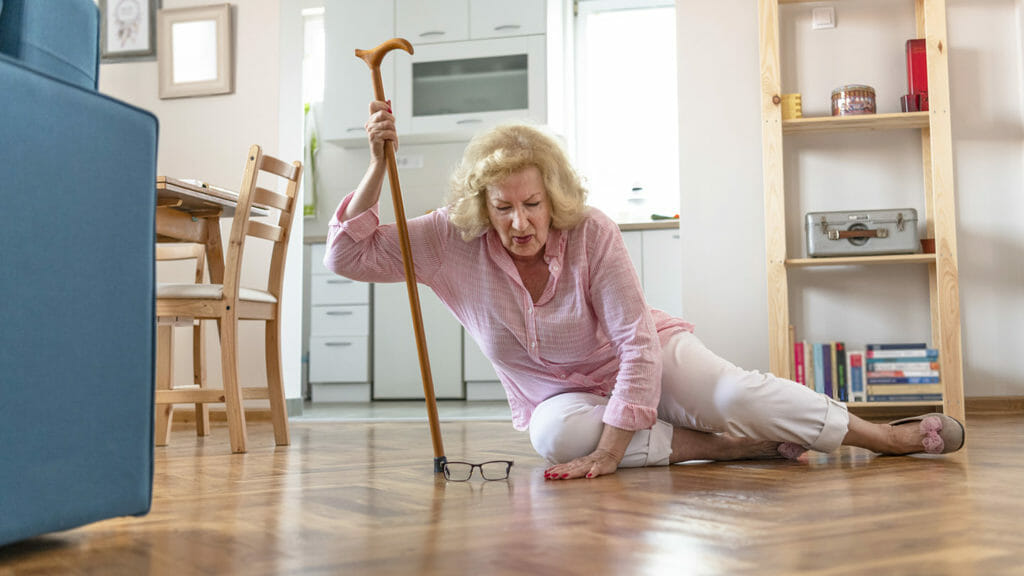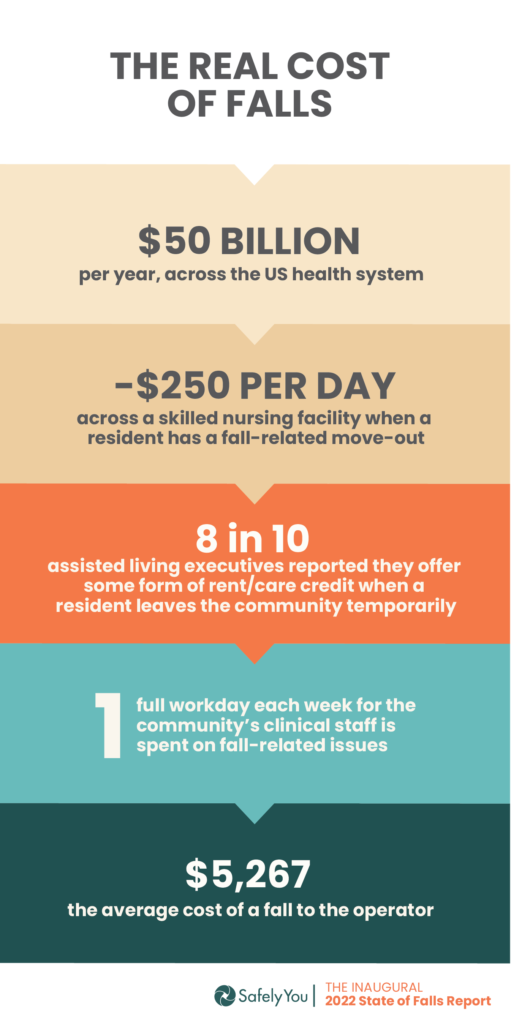
From quality of care to labor shortages, fall-prevention strategies can have enormous transformative effects on senior living and care businesses. Falls cost the average community or facility $380,000 annually in direct costs, according to a newly issued report.
The report resulted from a survey of more than 400 executives and caregivers across assisted living communities and nursing homes, as well as more than 1,000 adults. It assessed the effects of falls at and the counteractive approaches undertaken by providers.
Among the solutions highlighted are payers and capital partners providing funding to providers to experiment with solutions to reduce falls. Providers also need to collect data on falls, provide staff members training and support to focus on falls, and tailor resident care solutions to individual needs and personal histories, report authors said.
“People work in silos when they aren’t aware of all the possible solutions. So we need to bring insurance groups, capital partners, innovators, senior care providers, families and seniors together and share awareness of what’s working to reduce falls in senior care communities,” SafelyYou Chief Operating Officer Shirley Nickels told McKnight’s Senior Living. “When we break down these silos and work toward a shared goal, we can move beyond the status quo, move beyond the misconceptions around falls, and move toward creating transformative change.”
Overall, falls cost the US health system $50 billion a year. By 2030, there will be 72 million older adults experiencing a combined 52 million falls each year at a cost of $101 billion annually, according to San Francisco-based Safely You in its inaugural 2022 State of Falls, released this week.
Staffing challenges
Among the key findings: 85% of surveyed industry executives reported that falls significantly affected staff turnover due to stress. Forty-six percent of respondents also cited labor shortages as a top challenge. Two-thirds (66%) said that labor problems such as shortages led to a decrease in care quality.
The report also revealed how much time clinical staff members spend on fall-related issues: one full work day each week (17% of their time), on average.
The cost of falls

Providers with 20 or more assisted living communities experienced an average of 378 resident falls annually, compared with an annual average of 278 falls at skilled nursing facilities. One in five providers said that there are more falls in their communities today than before the pandemic.
Twenty-four percent of falls result in moving a resident to a higher level of care/service, according to respondents, with one in seven move-outs related to falls.
The majority of participating assisted living communities reported providing some type of rent or care credit for temporary move-outs. Skilled nursing facilities reported losing an average of $250 per day when a resident moves out for any length of time, with temporary move-outs averaging 21 days.
Across assisted living communities and skilled nursing facilities, the annual direct cost of all falls was $380,000 per location. For providers with 20 or more locations, the average cost was $712,000, and for providers with 19 or fewer facilities, the cost was $158,000 per location.
Taking action
Falls don’t have to be an inevitable part of the aging process, said SafelyYou Chief Medical Officer Glen Xiong, MD, who also is a clinical professor at UC Davis Health.
“For senior care providers, falls are a crisis — and it’s complex,” Xiong told McKnight’s Senior Living, adding that the report illuminates the full scope of those challenges, as well as solutions. “And it demonstrates that although the negative impact of falls is far-reaching, the positive impact of fall reduction may reach equally as far, creating a better quality of life for seniors.”
The report highlights the significant effects that falls have across long-term care, “capturing the enormous emotional, physical and financial tolls they take,” SafelyYou founder and CEO George Netscher said. The report also provides an opportunity for change, with a majority of providers intending to “elevate” their fall prevention strategies in the year ahead via staff training and certain innovations.
Other report findings: Half of survey respondents said that falls can be prevented, 66% reported having a fall safety team in place to focus on fall prevention and training, and 80% said they train staff members in fall safety. Ninety percent said that the right technology can significantly reduce falls.
Merrill Research collected responses from 210 executives and 200 caregivers at 273 assisted living communities and 137 skilled nursing facilities across the country in April and May. SafelyYou also conducted an online survey of 1,249 adults aged 42 and older in July to measure their sentiments about falls and aging.




